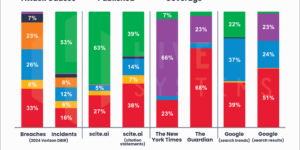Insurance broker Aon has incorporated the latest climate science into its Impact Forecasting’s European flood models to help enable insurers to access more accurate loss estimates to help make better decisions for underwriting, reinsurance and regulatory requirements.
The models are being enhanced through Aon’s ongoing collaboration with the Karlsruhe Institute of Technology (KIT), Aon said.
The news coincides with the first anniversary of major flooding across Western and Central Europe, which accounted for $13 billion in insured losses and represented the second costliest event of 2021. European flood peril was also a key risk highlighted in the sixth Intergovernmental Panel on Climate Change (IPCC) assessment report.
KIT provides a stochastic flood event set for different emission scenarios and time horizons if frequency and duration of extreme events change under future climate conditions. These scenarios will be integrated into all of Impact Forecasting’s European flood models over the next three years, enabling re/insurers to gain a physical view of flood risk based on both current and future climate, Aon explained.
“In addressing the impact of climate change on our clients’ businesses, we have implemented our long-term strategy of atmospheric model development with short-term deliverables. Our collaboration with KIT is a significant driving force in ensuring that output from our modeling suite is based on the latest climate research,” commented Adam Podlaha, head of Impact Forecasting, Aon’s catastrophe modeling unit.
“We are already witnessing the global challenges from climate change, and so this initiative aims to assist clients navigate volatility in their operations, build resilience and make better business decisions around risk transfer and risk mitigation,” Podlaha added.
To continue progress, Aon’s Impact Forecasting team has launched a pilot program that incorporates Central Europe climate change studies and previous research from KIT into its Czechia flood model. The German flood model’s climate scenarios are scheduled for launch in the third quarter of 2022.
Integrated into Impact Forecasting’s loss calculation platform ELEMENTS, insurers are able to assess the impact of climate-related losses on their portfolio for different time horizons, helping to identify where future European flood risk is caused directly by atmospheric or indirectly by weather-driven perils. The results account for future flood protection assumptions and socio-economic and insured exposure changes in risk-prone areas.
“Our study for Czechia shows the effect of a changing climate varies across Europe and depends on the size of river catchments,” according to Ladislav Palán, Impact Forecasting’s lead in climate change quantification for flood.
“Keeping flood defenses unchanged, the financial impact under such conditions might lead to a significant increase of average annual loss (AAL) and losses in shorter return periods while tail losses might decrease. These findings confirm the complexity of the studied phenomena and the need for partnerships and constant development,” Palán continued.
Source: Aon
Photograph: German Armed Forces began to erect a temporary bridge over the river Ahr at Insul, Germany, Monday July 26, 2021, after heavy rains caused deadly floods across the region. Photo credit: Thomas Frey/dpa via AP.





















 Surviving the ‘Silver Tsunami’: Closing the Talent, Skills Gap in Underwriting
Surviving the ‘Silver Tsunami’: Closing the Talent, Skills Gap in Underwriting  Study: Widening Gap Between Cyber Attack Causes, Public Perception
Study: Widening Gap Between Cyber Attack Causes, Public Perception  Most Distracting Holiday Songs for Drivers Ranked
Most Distracting Holiday Songs for Drivers Ranked  AI Scams, Emerging New Threats Among McAfee’s 2025 Cybersecurity Predictions
AI Scams, Emerging New Threats Among McAfee’s 2025 Cybersecurity Predictions 